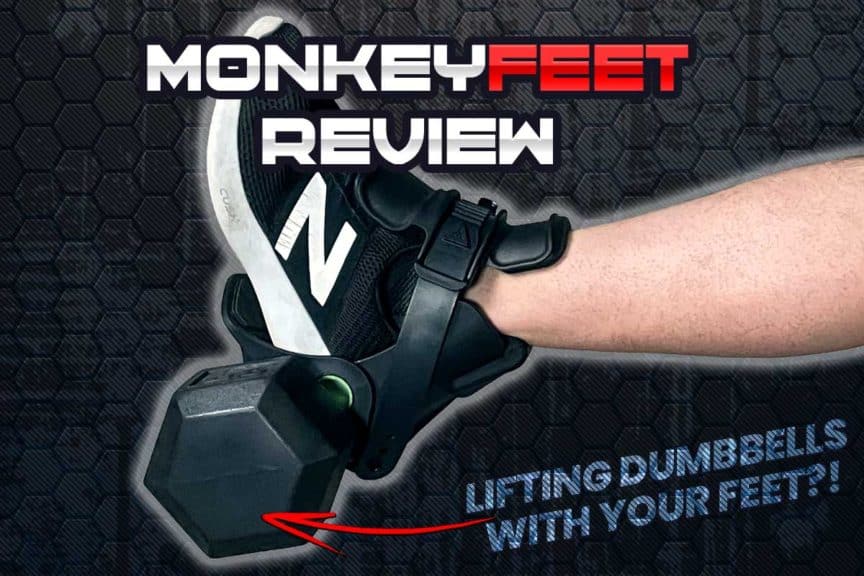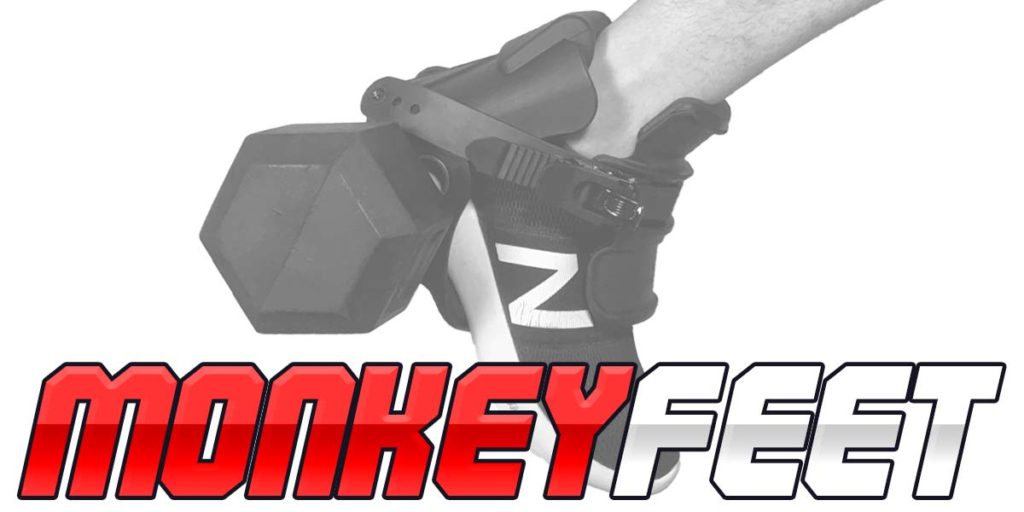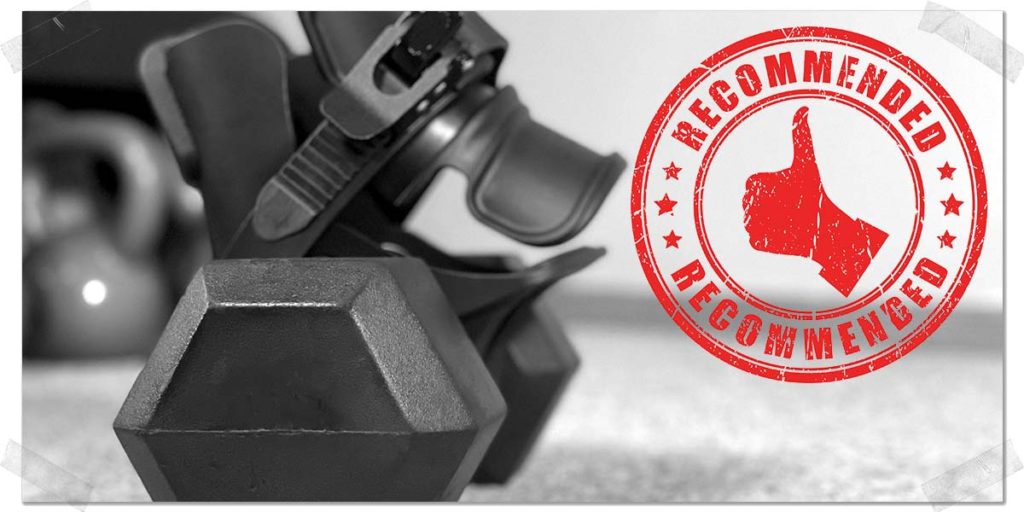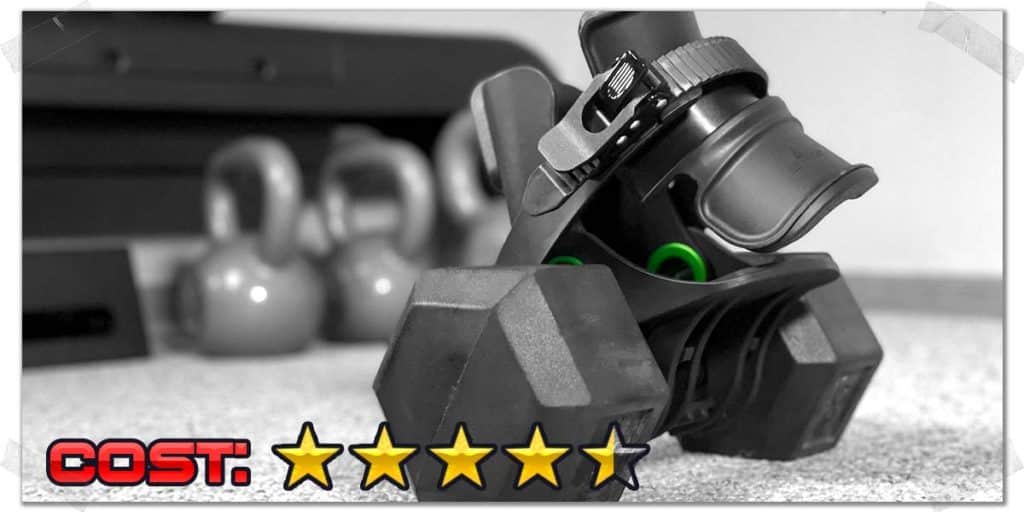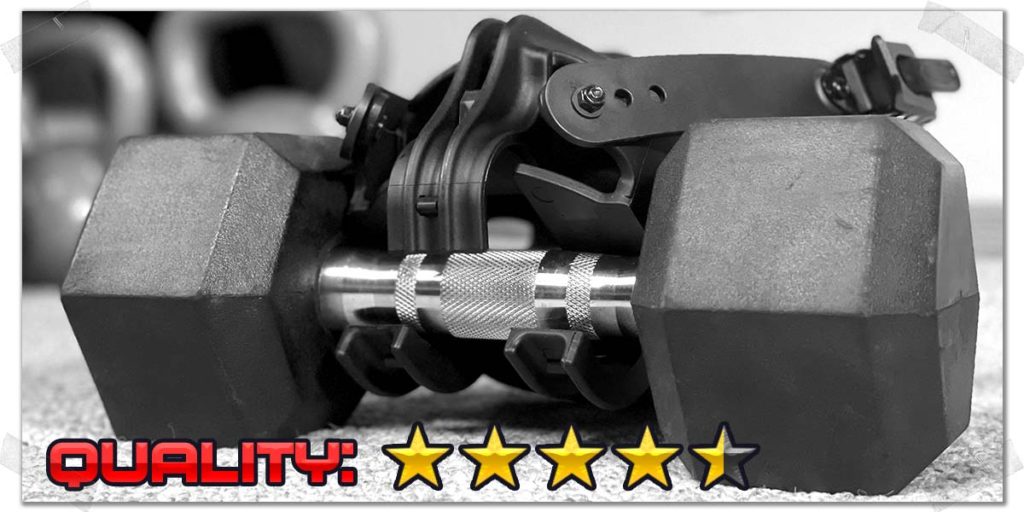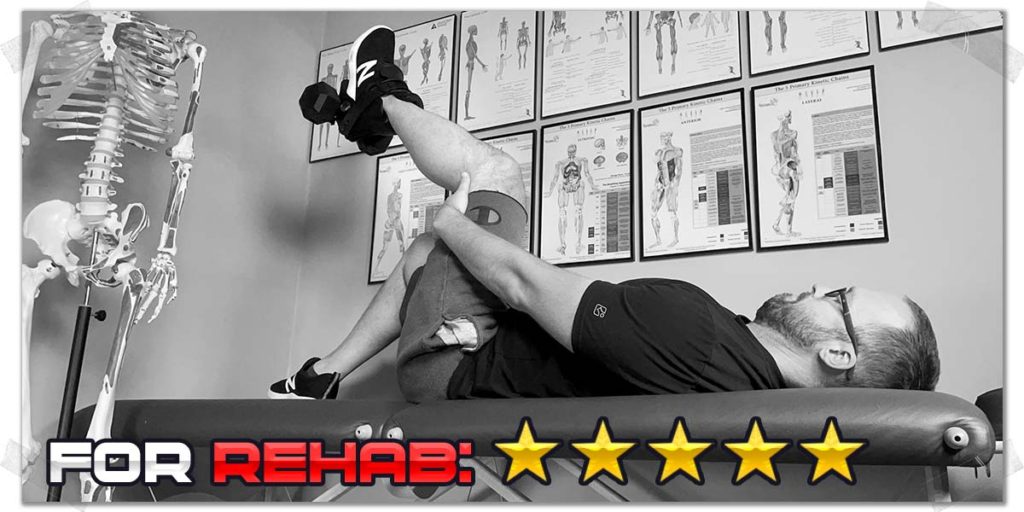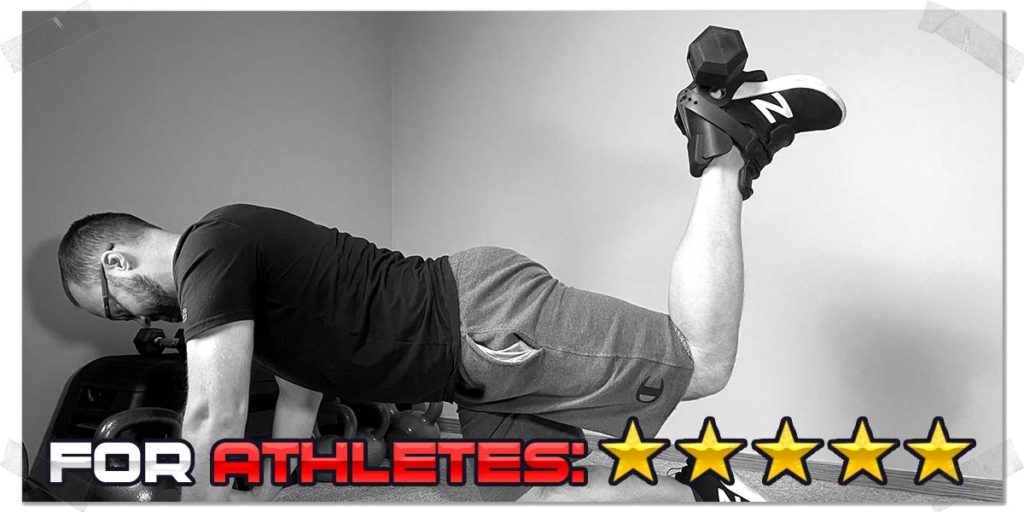As an orthopedic physical therapist (DPT) and a certified strength and conditioning specialist (CSCS), anytime I can get my hands on a piece of fitness equipment that can equally serve my patients in the clinic AND my clients in the gym, I get a little too giddy for my own good (hey, I love what I do, alright?).
So when the MonkeyFeet came along, I let out a squeal of excitement, bought one (with my own money), and proceeded to make the world a little stronger, one individual at a time. And after having now owned a Monkeyfeet for a while, I’m comfortable with giving my thoughts in a review.
The MonkeyFeet by Animalhouse Fitness is a highly practical and exceptionally beneficial piece of fitness equipment that can be used for injury recovery, injury prevention, and enhancing athletic performance. Its cost-to-benefit ratio makes it a great purchase for just about anyone.
Now, that’s the super quick rundown on this little device, but if you’re interested to learn more about its practicality for both rehabilitative and prehabilitative purposes, check out the details in the following sections below!
Disclosure: At the time of publishing this article, I did not have any affiliation with Animalhouse Fitness or its products; all thoughts and words within this article are strictly my own. I have since accepted an affiliation after having been offered by Animalhouse Fitness.
Related article: 6 MonkeyFeet Exercises for Hips, Glutes & Legs That You’re Not Doing (But Should)
Reasons for this review
I’m writing this review for two particular reasons:
Reason 1: Anytime I come across a piece of fitness equipment that I believe can help my patients, my clients, or my online audience (while being a wise purchase to make), I want them to know of its existence. I’m here to serve others, and anything that can genuinely help them live a stronger life is worth sharing. Also, when an individual or a company comes up with a good idea, it should be acknowledged and shared accordingly. I believe that Animalhouse Fitness deserves this recognition.
Reason 2: I haven’t seen much online content about using the MonkeyFeet for its injury rehabilitation potential. I’d imagine that just about anyone who has heard of this product is likely aware of its use for general fitness; however, I doubt nearly as many people don’t fully understand the implications this little device can have for various lower extremity injuries and subsequent phases of rehab.
So, consider this particular review aspect as my little gift to the internet.
The quick takeaway
I’m not one for wasting your time, so let’s do the “quick take away” of this device here at the start of the article, and if you want to learn some other nifty bits of information (that will likely help you get more out of your MonkeyFeet), you can keep reading thereafter.
The quick takeaway: For what you pay (which isn’t too much), the MonkeyFeet opens up a vast new world of lower extremity training for individuals of practically all fitness levels. It’s also an outstanding little device to have in the clinic if you’re an appropriately designated healthcare provider.
It’s hard to go wrong with this device; you don’t even need to have any overly heavy dumbbells, as light ones will get the job done for most individuals.
Now, if you want to know more of the specifics as to how I’ve arrived at the above conclusion, OR if you want to learn some great information about this device that you likely won’t learn elsewhere, keep reading!
If you would like to support this website AND would like 10% off all purchases on the Animalhouse Website, use the discount code “strengthresurgence” at checkout!
Who can benefit from the MonkeyFeet?
One of the beauties of this little device is the variety of individuals who can benefit from incorporating some Monkeyfeet training into their health and wellness pursuits.
The Monkeyfeet can be used for healthy and injured populations alike (depending on the type and extent of one’s injury, mind you). As such, it has a place in the gym and the clinic (take note if you’re a clinician).
Even better, it’s straightforward enough that most entry-level fitness enthusiasts can perform numerous exercises safely. Yet, it’s versatile enough that even advanced, highly athletic populations can adequately challenge their lower extremity strength.
Pro tip: I’ll often have some of my patients use the MonkeyFeet while wearing blood flow restriction cuffs to help further optimize their recovery (based on their individual needs)
Benefits for healthy, inexperienced populations include:
- Easy to use, not intimidating, and can be used in the comfort of one’s home.
- Requires no additional equipment other than a couple of dumbbells (which likely won’t need to be more than 15 pounds for novice individuals).
- Basic exercises such as leg extensions and hamstring curls are as simple to perform as they are effective.
Benefits for healthy, experienced, and athletic populations include:
- It’s absolutely brilliant for hip flexor strengthening. The hip flexors are paramount to keeping strong and healthy for athletes, especially those who rely on producing explosive lower body movements for their sport.
- It can easily be brought into the gym or training facility to augment the training typically done with machines, free weights, and other gym-based equipment.
- Exercises can be performed quickly or slowly to replicate the demands of one’s sport or training needs.
Benefits for specific injured populations include:
- The MonkeyFeet can directly or indirectly target affected muscles that are often tricky to strengthen without other expensive or large pieces of equipment.
- It can easily scale up or down resistance as needed.
- It can be used for isometric contractions, isotonic contractions, or even eccentric contractions (with therapist assistance), all of which can be uniquely beneficial depending on the rehabilitation stage and overall goal.
Extra insight: I wear size 10 shoes, and the Monkeyfeet fits me perfectly.
Cost of the MonkeyFeet
I’m an outspoken advocate of people being smart with their money, and I feel I’ve got enough professional insight to know whether or not a piece of fitness equipment is legit or more of a gimmick. The MonkeyFeet is definitely more of the former.
At the time of writing this article, a single MonkeyFeet on the Animalhouse website goes for $79.95 (USD). I’ve heard other people online griping about the price, but honestly, I’m ok with it. Sure, I wish it could be a little bit less expensive. Still, as I say in nearly all of my favorable product reviews: I’m just a physical therapist and movement geek; I have no idea the R&D costs, marketing costs, and everything else that goes into making a piece of fitness equipment. So, I’m not going to complain about the cost.
If the cost truly is an issue for you, skip your overpriced morning latte at the local coffee shop for a week or two, and you’ll have enough money to purchase a MonkeyFeet.
Versatility: What you get FAR outweighs the cost
If you still feel that the MonkeyFeet is too expensive, it may help to enlighten you (or help you remember) that you’re gaining a nearly infinite number of lower body exercises in return for your dollars. You’ll also be further bulletproofing your lower body against various aches, pains, and injuries.
In other words: the cost-to-benefit ratio is abundantly in your favor.
Injury prevention tip: Using the MonkeyFeet for standing hip flexion exercises is one of my favorite go-to exercises for many patients with lower crossed syndrome, weak hip flexors, or other similar issues.
Without this little device, you’ll either have to use multiple machines and various other pieces of fitness equipment (which you likely don’t have at home) or rig up some bands and tubes through some other time-consuming process.
I’m all about practicality, so buying one just makes sense to me instead of hassling with going to the gym to use various pieces of fitness equipment or jury-rigging up an alternative.
And as an added bonus: The MonkeyFeet can easily be thrown into your gym bag and taken to the gym. So whether you want to do a home workout or just supplement a bit of your training at the gym, it’s easy to do so with this device.
Quality
I’m a big stickler when it comes to product quality. However, I also believe in practicality. The MonkeyFeet is a perfect example of what happens when these two worlds collide within my brain.
Being nearly entirely made from plastic, a part of me would like this device to have a bit less plastic and a bit more metal. I often (and admittedly, erroneously) perceive plastic as “cheap” or less durable when compared to metallic materials.
But – there’s also the practicality. The heavier the MonkeyFeet gets:
- The less exercise variety you can get with the device.
- The more expensive it becomes.
And so I (and perhaps you as well) need to keep in mind that plastic is a perfectly suitable material for this little device as it keeps its weight and cost on the lower end, which is ideal. And it’s not like this is a piece of equipment you’ll be abusing; assuming you take half-decent care of it, you should be alright.
The MonkeyFeet doesn’t need to be made from metal and built like a tank. Still, I thought about the device’s longevity back in the early days. Thankfully, it seems to be holding up just fine, and chances are that by the time it breaks, it will have helped enough patients that it won’t owe me anything.
The only thing worth quickly mentioning is sometimes the ratchet can be a little bit finicky — having a hard time initially grabbing onto the teeth of the binding, but this is intermittent, and the ratchet usually catches with a quick tug on the strap.
Ultimately, I’m happy with the quality. I didn’t pay hundreds of dollars for this device, and it’s given me the world in terms of new ways to rehab patients and train athletes, so I feel I’ve gotten my money’s worth in quality.
Practicality for rehab
The lower extremity (i.e., the leg) is the most frequently injured area of the body, and these injuries occur throughout the entire lifespan.1,2 If you’re an athlete, you may be surprised to know that over 60% of all injuries in youth sports (ages 5 – 24 years old) are lower extremity injuries.3
The MonkeyFeet shines brilliantly for various lower extremity injuries, particularly those that affect the knee and hip muscles. This is one of the main reasons why I’m such a fan. As an orthopedic physical therapist, the muscles I most often rehab with the MonkeyFeet are:
- The quadriceps muscles
- The hamstring muscles
- The hip flexor muscles
Pro tip: There are times when it may be more advantageous to hook up a band to the MonkeyFeet rather than a dumbbell. Neither is right nor wrong; it all depends on the needs of the individual. My patients can often benefit from an accommodating resistance (i.e., a band) over a dumbbell, so I’m not afraid to hook a band up instead!
Depending on the individual and their overall condition, I’ll also use the device for:
- The adductor muscles
- The glute medius & minimus muscles
Sure, you can use TheraBand or other types of resistance bands for many of these lower body exercises (and I often still do, mind you), but the MonkeyFeet can quickly become more challenging than what TheraBand can sometimes offer. And when using bands for lower extremity rehab, you usually have to have a solid anchor point to hook the band to, which isn’t always ideal.
Want to see some less common MonkeyFeet exercises I use that I’ve had success with? Check out my YouTube video below.
Practicality for fitness & sports training
Whether a rookie athlete or a seasoned veteran, the MonkeyFeet has a place at the table for all athletes — competitive or recreational alike.
The MonkeyFeet can often reveal limitations in an athlete’s abilities, and bringing these limitations to the surface is crucial; they reveal where an athlete’s performance may be suffering or the potential for injury.
I’ve seen athletes who can squat hundreds of pounds yet can’t do ten standing hip flexions with a lightweight on the MonkeyFeet without needing to stop for a quick break or without complaining of notable fatigue in their hip.
And since the MonkeyFeet is typically used one leg at a time, it has an uncanny way of helping my athletes feel any strength, endurance, or motor control deficits from one leg to the other. As an athlete, you always want to strive for equal strength and movement abilities on each side of the body; the more asymmetrical your strength or mobility becomes, the greater your likelihood of reduced sports performance or sustaining a lower-body injury.4,5
Final thoughts
There’s a lot to like about the MonkeyFeet, and even more than can be gained from its use. From basic injury recovery to full-on demanding athletic movements, the MonkeyFeet can be a brilliant addition to one’s lower body training. It’s small, simple to use, and exceptionally practical. Perhaps the only thing I don’t like about it is that I didn’t come up with the idea myself!
References:

Hi! I’m Jim Wittstrom, PT, DPT, CSCS, Pn1.
I am a physical therapist who is passionate about all things pertaining to strength & conditioning, human movement, injury prevention and rehabilitation. I created StrengthResurgence.com in order to help others become stronger and healthier. I also love helping aspiring students and therapists fulfill their dreams of becoming successful in school and within their clinical PT practice. Thanks for checking out my site!

